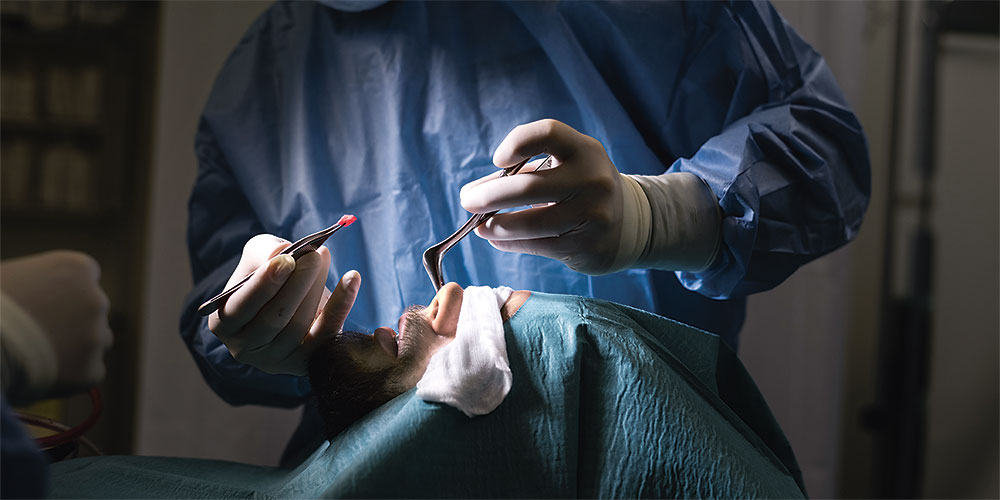From nose to knee
Text: Reto Caluori
Cartilage cells from the nose are exceptionally well suited to repairing damage in knee joints.
Treatment of cartilage defects in joints is problematic, as conventional therapies sometimes lead to chronic pain or limited mobility. Researchers at the University of Basel and University Hospital Basel have developed a promising method for healing damaged knee cartilage, in which cartilage cells are harvested from the patient’s nose and grown into a functional tissue in the lab. The resulting graft is then implanted in the damaged knee cartilage.
To this end, the researchers led by Professors Ivan Martin and Marcel Jakob adopt two innovative ideas: First, they use nasal cartilage cells, which possess superior growth and cartilage formation properties compared to cells from the knee joint. Second, they do not implant the cells themselves, but a mature tissue with properties similar to those of cartilage tissue in the knee joint.
In an earlier study, the group had already shown that nasal septum cells have a distinct capacity to grow and generate new cartilage tissue that is barely affected by age. What is more, animal trials with goats showed that the implanted nasal cartilage cells were compatible with the knee joint environment. In an initial clinical trial at the University Hospital of Basel, around 20 patients were successfully treated.
The research group in Basel is now conducting a trial to assess the effectiveness of the method, which is especially suited to the treatment of cartilage defects in healthy joints. The project, entitled “Bioengineered grafts for cartilage healing in patients” (BIO-CHIP) is supported by the EU funding program “Horizon 2020”.
Ivan Martin is Professor of Tissue Engineering at the Department of Biomedicine, University of Basel and University Hospital Basel. He is currently academic lead on a study to test the use of cartilage cells from the nose to re-pair cartilage damage in the knee. The clinical component is based at the department of orthopedics and traumatology at University Hospital Basel.
More articles in the current issue of UNI NOVA.








